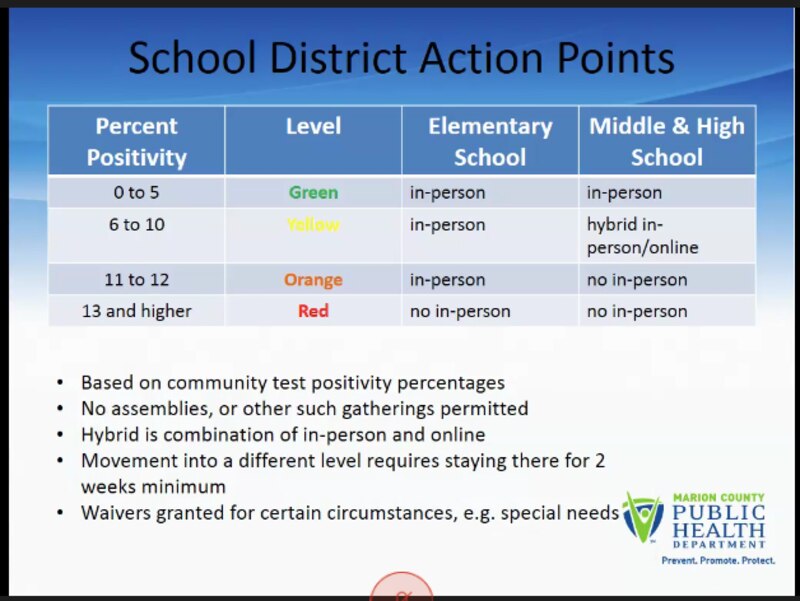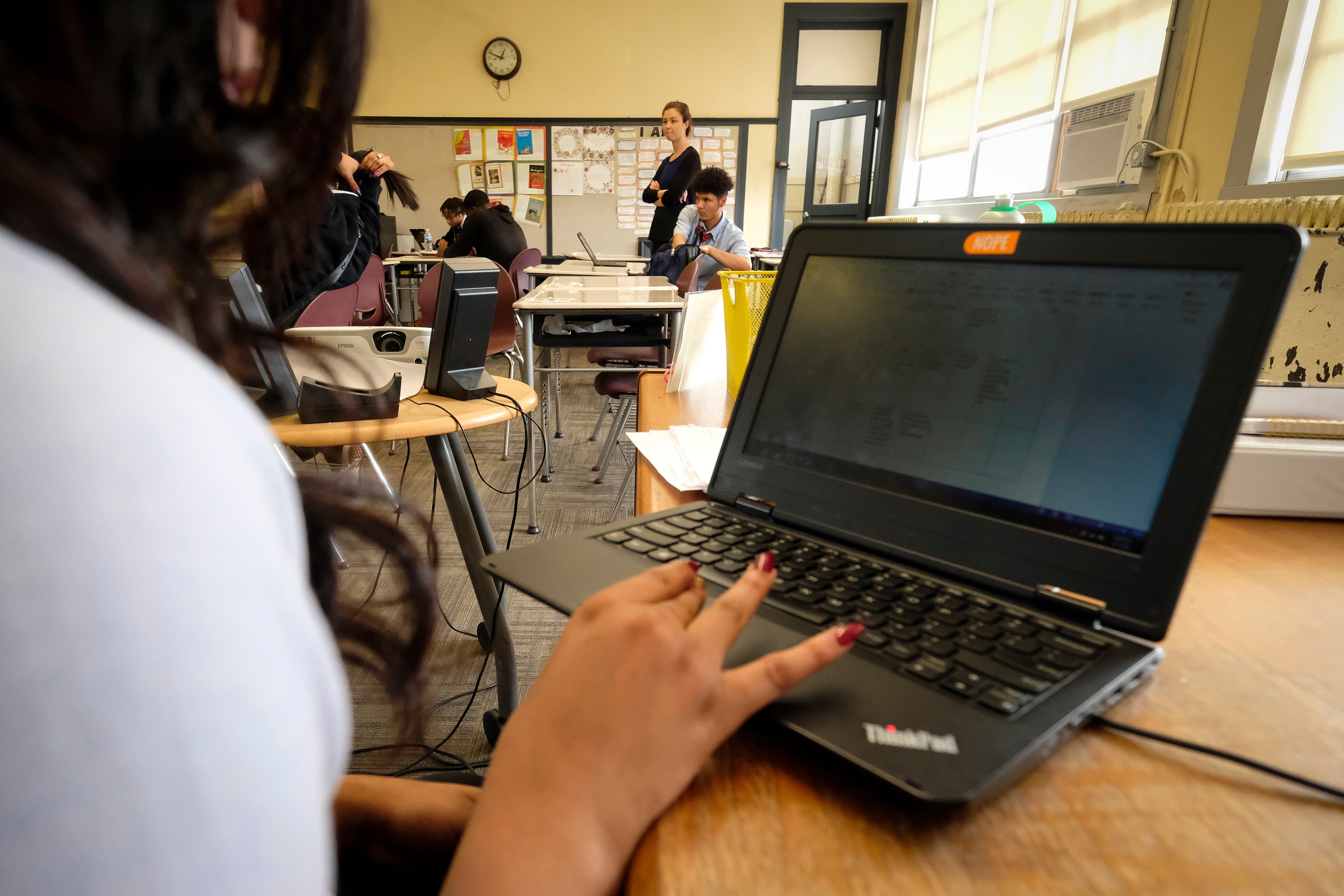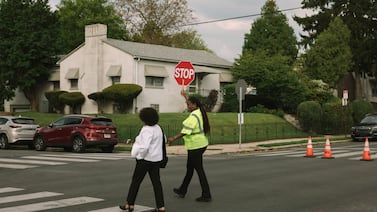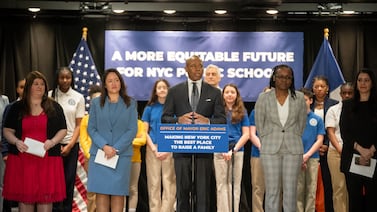Indianapolis middle and high school buildings may operate at no more than 50% capacity in an effort to reduce the spread of the coronavirus, under a public health order announced Thursday by the Marion County Health Department.
Elementary schools, however, will be able to fully reopen for all students to return to classrooms five days a week. The public health order calls for all students in third grade and above to wear masks, permanent seating charts, and staggered passing periods. Marion County Public Health Department Director Virginia Caine also recommended that high-risk teachers and students be allowed to opt-out of in-person instruction.
For the first time since the pandemic began, local health officials are giving education leaders a clear way of knowing what restrictions may be placed on school buildings as the spread of the coronavirus worsens or improves. A new four-level system, ranging between green, yellow, orange and red, specifies what level of school reopening is considered safe based on the COVID-19 test positivity rate in the community.
Marion County had a seven-day average positivity rate of 9.2% as of Sunday. It is considered “yellow” under the new system, the first level triggering restrictions on schools that will remain in place for at least two weeks. The positivity rate must drop below 5% for schools to operate with no restrictions on in-person learning. If the county reaches a positivity rate of 13% or higher, schools should not offer in-person instruction.
The last-minute guidance comes after several school districts have already called off in-person instruction in a city where students routinely return to classrooms in late July or early August. It is forcing adjustments at schools that have spent months drafting and refining reopening plans.
“We needed this guidance in June,” said Tommy Reddicks, executive director of Paramount Schools of Excellence charter network, which shifted to a hybrid model for middle school because of the health order. “One week’s notice to make a gigantic organizational shift adds trauma and chaos to your organization and might be unfeasible, especially for our larger school districts.”
Still, Reddicks said, it will be a valuable tool in the coming months as conditions on the ground change. “We need something to be able to follow to understand why decisions are being made and how they impact us,” he said.

The rule limiting capacity to 50% does not apply to middle and high schools with fewer than 400 students that are able to maintain distances of six feet apart in classrooms.
Many schools around the county are prioritizing bringing elementary school students back to classrooms because they appear to be less likely to become infected or spread the virus.
“Our hope is that these benchmarks will give school boards, superintendents, principals, other school leaders, the tools necessary to make decisions about how to best serve their students based on current and known public health trends,” said Indianapolis Mayor Joe Hogsett at a press briefing.
The city’s largest district, Indianapolis Public Schools, announced plans Wednesday to begin the year entirely virtually. IPS Superintendent Aleesia Johnson also proposed more cautious guidelines for determining when it would be safe to come back to classrooms: The district would look for the community to go for 14 days with an average positivity rate of 5% or less before returning in-person.






